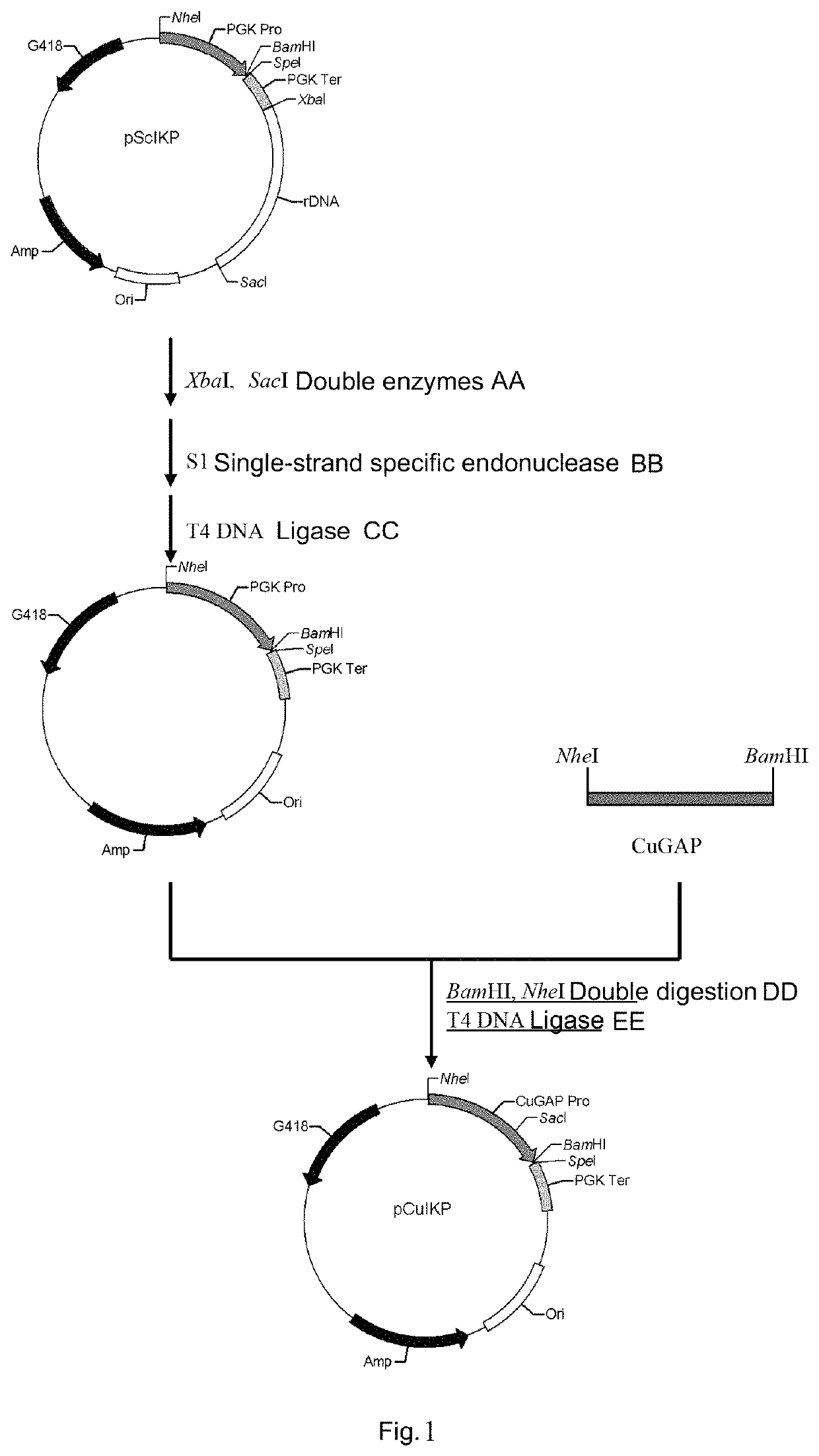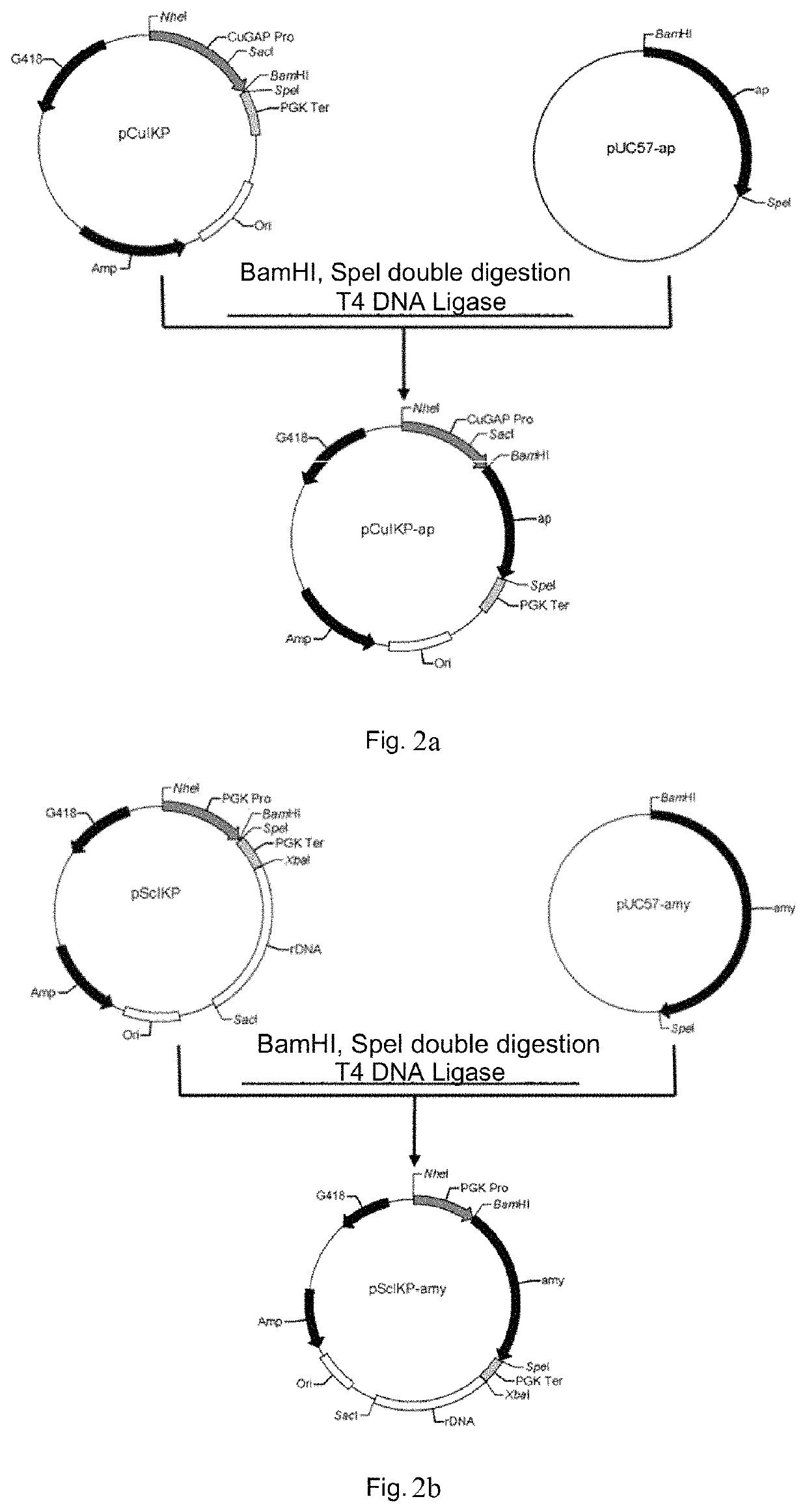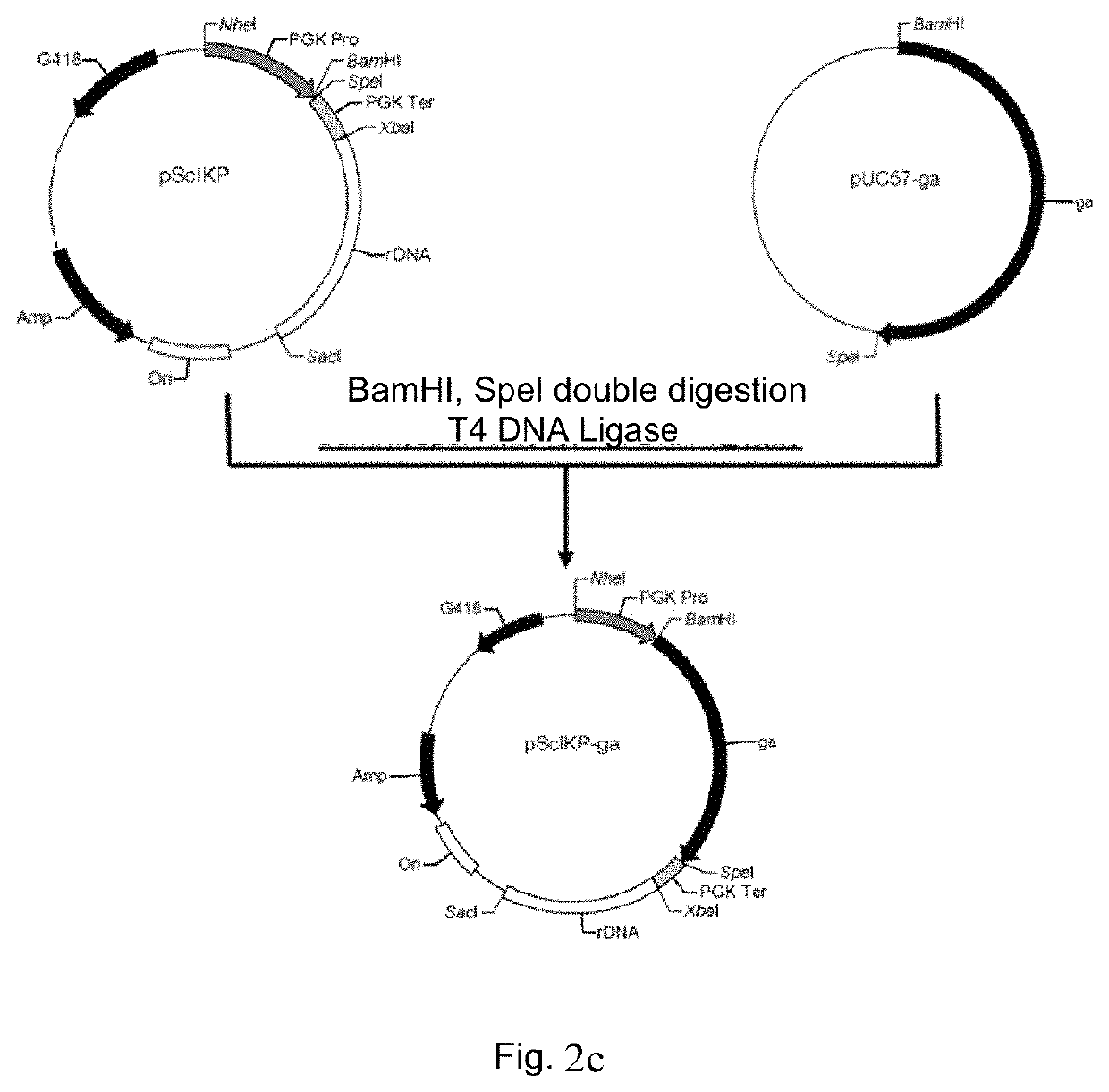Genetically engineered Candida utilis capable of degrading and utilizing kitchen waste and construction method therefor
a technology of genetic engineering and candida, which is applied in the field of genetic engineering and fermentation engineering, can solve the problems of large amount of kitchen waste, rot and smell of kitchen waste, and pollute the environment, and achieve the effects of reducing the number of bacteria
- Summary
- Abstract
- Description
- Claims
- Application Information
AI Technical Summary
Benefits of technology
Problems solved by technology
Method used
Image
Examples
embodiment
[0034]The Candida utilis used in this embodiment is purchased from Guangdong Culture Collection Center (number: GIM2.176). Vector pScIKP is constructed and deposited by Research Center for Molecular Biology, Jinan University.
[0035]I. Construction of Candida utilis Expression Vector pCuIKP
[0036]1. Perform double digestion for cleaving Saccharomyces cerevisiae expression vector pScIKP by using restriction endonucleases XbaI and SacI and excise the Saccharomyces cerevisiae rDNA sequence fragment from pScIKP.
[0037]2. Excise the overhangs generated by the double digestion in step 1 above by using single-strand specific endonuclease (S1 nuclease, Takara) to obtain the fragments with blunt ends; then cyclize the obtained fragments with blunt ends by using T4 DNA ligase to obtain the vector with rDNA deleted.
[0038]3. With reference to the promoter (CuGAP) sequence of glyceraldehyde-3-phosphate dehydrogenase of the Candida utilis published by NCBI (Accession: FJ664342), design primers using ...
PUM
| Property | Measurement | Unit |
|---|---|---|
| concentration | aaaaa | aaaaa |
| pH | aaaaa | aaaaa |
| temperature | aaaaa | aaaaa |
Abstract
Description
Claims
Application Information
 Login to View More
Login to View More - Generate Ideas
- Intellectual Property
- Life Sciences
- Materials
- Tech Scout
- Unparalleled Data Quality
- Higher Quality Content
- 60% Fewer Hallucinations
Browse by: Latest US Patents, China's latest patents, Technical Efficacy Thesaurus, Application Domain, Technology Topic, Popular Technical Reports.
© 2025 PatSnap. All rights reserved.Legal|Privacy policy|Modern Slavery Act Transparency Statement|Sitemap|About US| Contact US: help@patsnap.com



